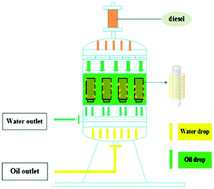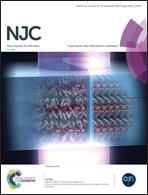Synthesis of aminopyridine-containing conjugated microporous polymers with excellent superhydrophobicity for oil/water separation
Abstract
The development of a robust strategy for the effective removal of oils and organic pollutants should be of great technological significance for addressing severe environmental issues. Here we report the synthesis of superhydrophobic aminopyridine-containing conjugated microporous polymers (APCMPs) for oil/water separation through a simple one-pot coupling reaction. The resulting APCMPs show high thermal stability with a decomposition temperature of up to 300°. Wettability measurements show that all four kinds of APCMPs have a water contact angle (WCA) of higher than 150° and an oil contact angle of about zero, indicating excellent superhydrophobicity and superoleophilicity which have great advantages over those traditional approaches for the construction of superhydrophobic surfaces that usually suffer from a number of drawbacks such as the need for complicated techniques, multi-step processes or high production cost. By decoration of commercially available cotton threads with the as-synthesized APCMPs, a continuous oil/water separation instrument was designed and fabricated with high oil/water separation efficiency. Due to their physicochemical robustness, excellent superwetting ability, and simple and scalable production, such APCMPs may hold great potential as superwetting porous materials or coatings for oil spilling cleanup or other pollution removal applications.



 Please wait while we load your content...
Please wait while we load your content...